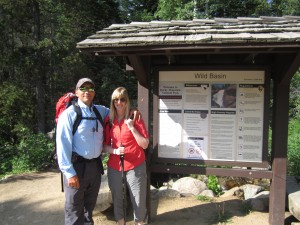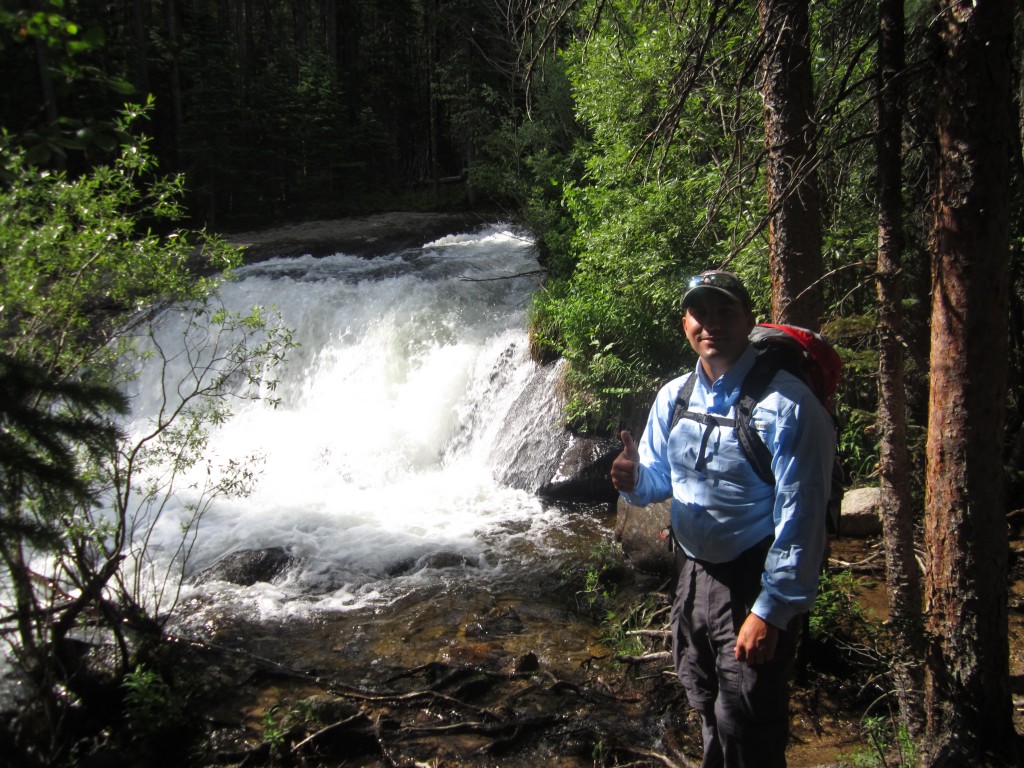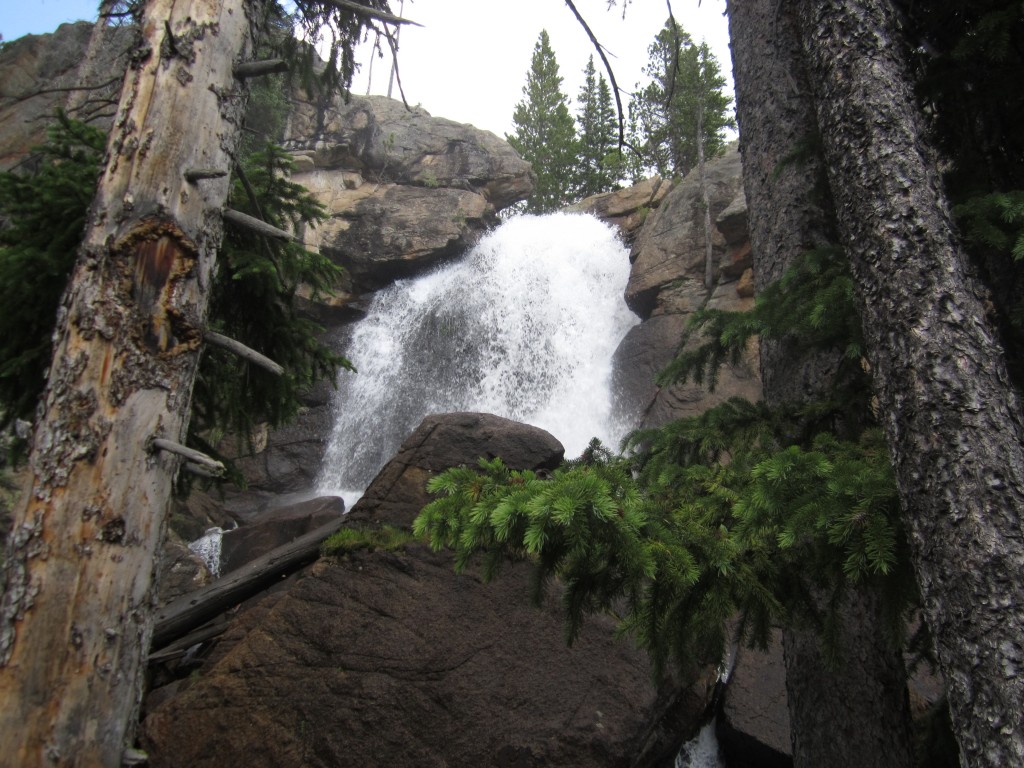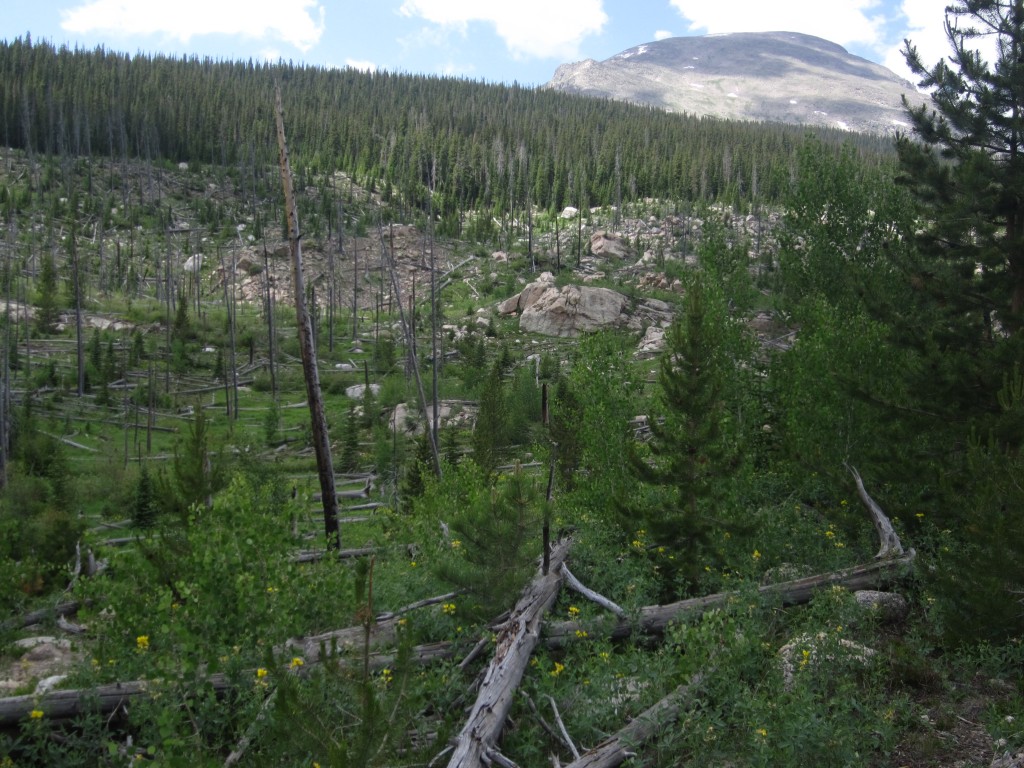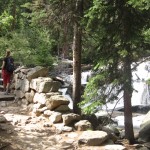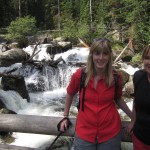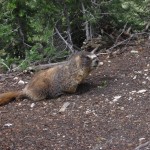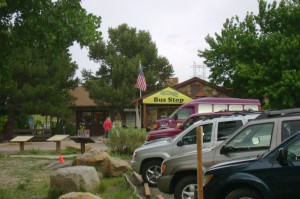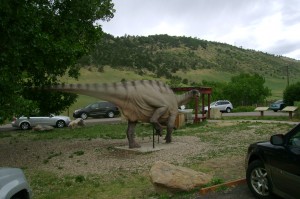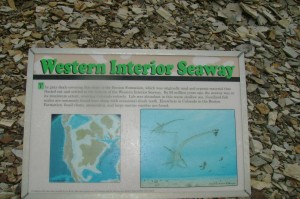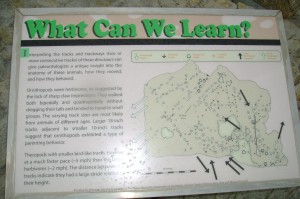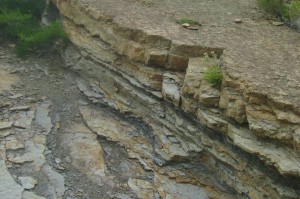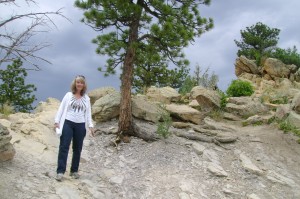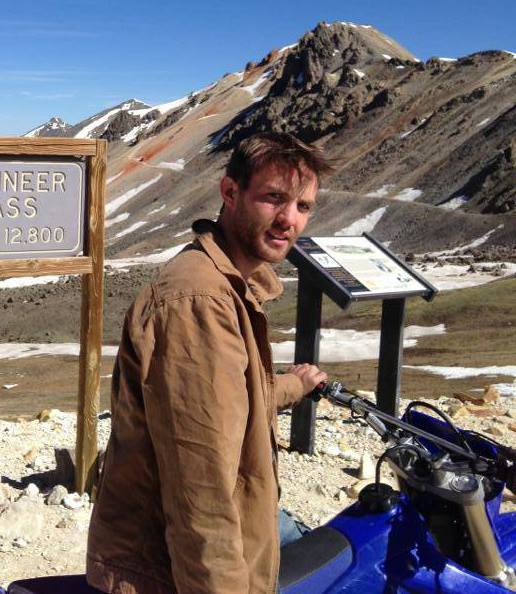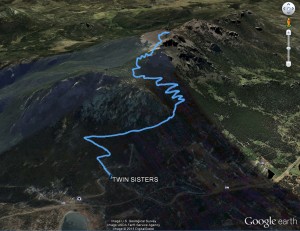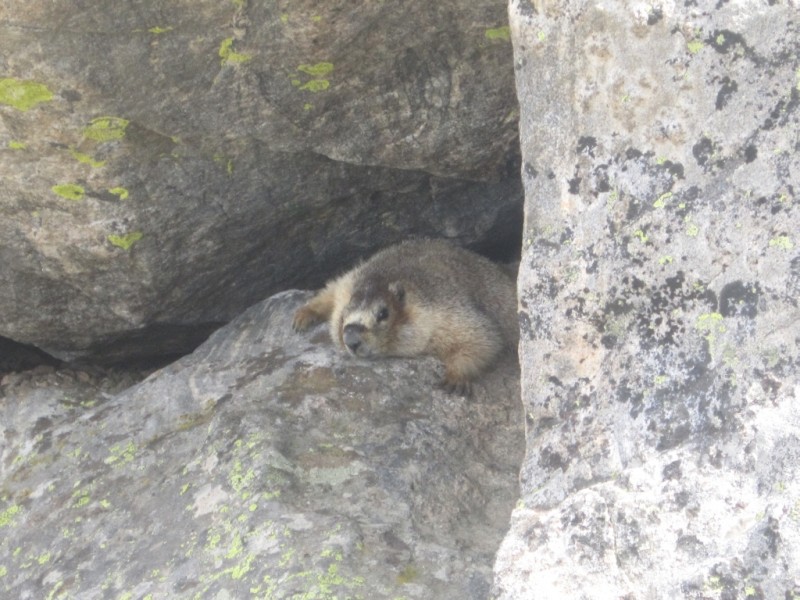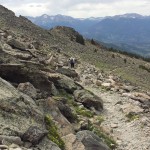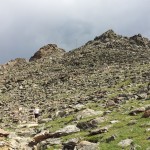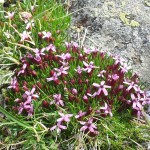Take a Walk
A Quest into the Wild
Ouzel Falls and Lake: Wild Basin

Distance: 11.13 miles (out-and-back; spurs) Elevation Gain: 1,702 ft
Max Elevation: 10,033 ft Min. Elevation: 8,517 ft
For our Fourth of July celebration, we thought what better way to celebrate than by exploring a little bit more of the country on foot. Thus, early on Independence Day morning we awoke from our cool mountain slumber at Estes’s Park Discovery Lodge and headed back to Wild Basin in Rocky Mountain National Park. We reached the park entrance at about 8:20 am, and purchased our season entrance pass (40 dollars) and then followed the dirt road for about 1.2 miles to the Wild Basin Trailhead and parking lot. Luckily there were still a few parking spots at the trailhead allowing us to finally set out on foot in the beautiful southeastern part of this park. Seen below is a picture of part of us at the trail head. Our friend Julia from Houston was able to join us on this scenic hike.
The sounds of rushing water can be heard frequently along the early portion of the trail as it follows the St. Vrain Creek closely. The rewards are frequent and early on this hike, and after a mere 0.3 miles, the trail led us to a splendid visual spectacle as it approached Copeland Falls. We paused a brief moment along a rock shelf and absorbed the cool breezes from the swiftly flowing creek. Photos of Lower Copeland Falls can be seen below.
The next 1.5 miles of the trail, led us through a cool shady forest of Lodgepole Pine interspersed with Aspens and firs. There were also many beautiful wildflowers adding color to sides of the brown dirt path we followed. The path made moderate climbs leading over numerous log bridges that crossed the creek and various falls. At approximately 1.8 miles we reached Calypso Cascades which is fueled by Cony Creek and appears to converge with the North St. Vrain Creek further below. This amazing set of falls flows under a log bridge on the trail. The bridge offered us impressive views of the pristine water flowing down the steep granite wall over 200 feet below and refreshing cool sprinkles of water. Gentle thunderstorms over the past several days and fresh snow melt allowed for tumultuous river flow and an impressive spectacle. Top: Bridge over unnamed fall; Bottom: Calypso Cascades
After the cascades, the traffic flow on the trail thinned out a little bit more as we proceeded to Ouzel Falls. The trail gradually gained elevation for the next mile to the landmark Falls and followed a north facing valley wall. The climb was moderately difficult for this brief period but offered us lovely views of Mt. Meeker and Long’s Peak at various points. It really put in perspective for us just how much higher we would have to climb to summit Long’s Peak. After the brief climb, we reached the famous Ouzel Falls. The creek, falls and lake are named after the Ouzel or “dipper” bird native to the area. A very lengthy bridge crosses over the creek here and offers nice views of the powerful falls. We wanted a better look at the water fall, so we climbed up granite boulders alongside the falls that are located on both sides of the bridge to get higher and closer. The climb up wasn’t too easy and rocks were a bit slippery, so exercise extreme caution when doing this. The fall off the edge did not look very survivable. Seen below are photos of the Falls from the bridge as well as our climbs. Notice the sheer size of Ouzel Falls by the photo of us sitting on the boulders.
After about 20-30 minutes hanging out at Ouzel Falls, we knew we needed to keep moving to reach Ouzel Lake and have time to enjoy lunch so we proceeded on. After Ouzel Falls, we saw very few hikers. The hike to the lake began with steady gains in elevation which turned into steep gains in elevation. Our blood was pumping and legs burning, but we all tried to keep a steady pass that we could sustain. Eventually the trail opened up to the once charred hillsides that are remnants of the infamous 1978 fire caused by lightening near Ouzel lake. The fire was thought to be a “cleansing” fire and was left alone but due to high winds it grew dramatically and destroyed over 1,000 acres of land before containment. The fire stricken hillsides without the cover of the trees emanated an eerie vibe. However, the grasses and wildflowers littering the treeless hillsides were a reminder that life does prevail. Photos from the last 2 miles to the lake can be seen below.

We finally approached a trail sign directing us on a spur that led 0.5 miles to Ouzel Lake. Alternatively, the trail continues on to Bluebird Lake 2.0 miles further. The spur was muddy and wet as we gently descended to the lake. It was truly exciting when we reached our tranquil lake destination. Ouzel lake is a very shallow lake and we could clearly see the rock bottom as we searched along it marshy banks for a place to stop and relax. The lake is home to the native Greenback cutthroat and is a work in progress. The park is working on reestablishing a population in many streams and rivers in the park. Since the restock is small, these fish are catch and release only. Pictured below is Ouzel Lake.
We quietly relaxed on rocks overlooking the lake and ate much deserved peanut butter and jelly sandwiches and drank down gatoraide. While relaxing, sneaky little creatures visited our picknick and tried to take our snacks. We encountered multiple chipmunks and a large marmot while resting on the rocks.
The spur that leads to Ouzel lake off of Bluebird Trail only allows for easy access to one small north side section of the lake. Since we had carried along our fly fishing gear, we wanted a chance to snag a decent fishing spot. Thus we proceeded to skirt the edges of the lake towards the west side with no trail for guidance. The land that surrounds the lake is a marshland. As we looked for dry spots to plant our feet, we felt the ground give way like a sponge. There was water everywhere and very thick brush and trees to navigate in between. But, we were quite determined, and at the very least wanted to make it to a small clearing that opened up just past a narrow stream. Branches scraped and stung our skin, and dampness beyond sweat began to creep between our toes. We reached the clearing just as the rain began to come down. What first appeared as just a few light drops on our skin quickly turned into steady downpour of heavy, cold drops. At this point we opted against fishing and decided to try for Bluebird Trail, which according to our map should be just north of us. Unfortunately, the path to the trail, for all descriptive purposes, was a pond hidden to us by grasses and marsh. We briefly attempted a navigation across various logs strewn across the low lying bed, but gave up as the rain did not relent. Slightly disappointed but still proud of our off trail journey, we proceeded back to the Spur trail and headed back toward the Bluebird/Ouzel Spur fork. Along the way, we were greeted with another marmot friend that stared down Julia for a while. Apparently our little friend was not used to people hanging out in this part of the land. Seen below are more photos from the lake, marsh and creek beds that connect to the lake.
We headed back to the trailhead after our exploration of the lake and enjoyed the scenery from a different perspective. It was relatively quiet until we were back to Ouzel falls and then it became pretty crowded. By the time we were past Calypso Falls we were almost never alone on the trail. For the last mile we were part of a long line of hikers with about 10 to 15 hikers in front of us and another 10 behind us. We were glad to be back in the parking lot and felt very accomplished for the day. After our long trek we decided to head into Estes Park and get some well deserved pizza and ice cream. To date Ouzel Lake has been our favorite hike. Our Garmin E-trex 20 recorded our journey at approximately 11.13 miles. If you stick to the trail to the lake and back, the journey will be around 10.5 miles.
Dinosaur Ridge and Dakota Ridge
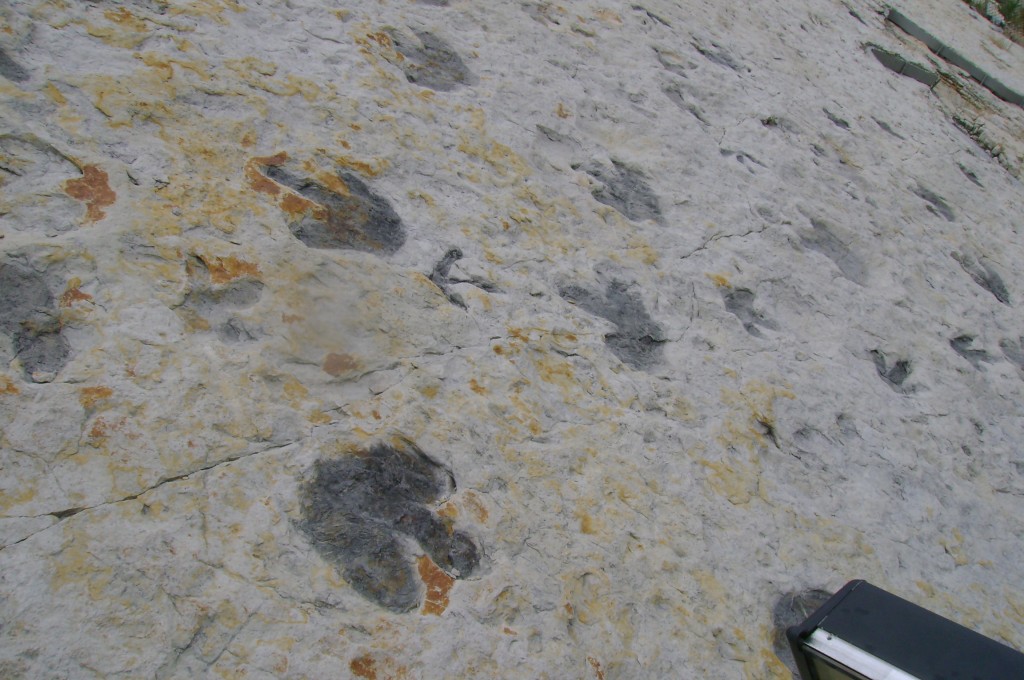
Distance: 2.54 miles (out-and-back; spurs) Elevation Gain: 442 ft
Max Elevation: 5,963 ft Min. Elevation: 6,366 ft
This past weekend was a very rainy and thunderstorm filled weekend when Thomas’ mother came to visit us. Since she’s an elementary school teacher we thought this was an ideal time to check out Dinosaur Ridge and the Dakota Ridge Hike. The ‘hike’ is on the west side E-470 just off I-70. Because of this it is definitely not an isolated hike where you can get away from the city. Driving in we saw a large sign for Dinosaur Ridge (seen above) and some dinosaur sculptures of a stegosaurus and what be an Eolambia.
The visitor center is very nice and has food and drinks available. There is also a museum, guided bus tours, and a gift shop. The visitor center does offer activities for children and we imagine that kids would have a lot of fun playing around, learning about dinosaurs, and enjoying a snack here. There are maps for sale, but the trail is so simple that we don’t think they are necessary. Also, there is a trailhead sign with a map right outside the visitor center, which you can see below.
The hike itself goes along a paved road, which we didn’t enjoy very much but would be very easy for those who have trouble walking and also children. The road goes along for 2 miles and there is varied traffic. The only motorized traffic is tour buses; and then there are cyclists and the foot traffic. All along this road are signs telling you what you are looking at. In the map above you can see a list of all the notable features on the hike. Below you can see the road we walked on and an example of some of the signage.
After hiking a little ways we came upon one of the larger exhibits along the trail — dinosaur tracks. Walking up we saw a large viewing are and a shelf of exposed rock with numerous dino tracks littered all around. A sign told us that these tracks were left by three creatures: the Eolambia, the Acrocanthosaur, and the Ornithomimid. You can see images of these three dinosaurs below on a sign as well as a description of how these tracks were interpreted by scientists.
Geologically the site was quite interesting and multiple layers of rock could be seen; however, for us, after looking at ripples left in the rock left by an ancient ocean for a minute we were ready to move on. The problem was that the hike itself didn’t have much to offer other than these brief stops, many of them showing how a crevice in the rock was where a branch once was at the bottom of the ocean. You can see the branch impression below as well as the strata of rock below.
Right before the turn we around the ridge we saw what looked like a genuine hiking trail leading up the ridge. We figured out pretty quickly that this must be the Dakota Ridge trail and we decided to follow it a ways. Although the east side of the ridge faces I-70 and E-470 the west side of the ridge faces Red Rocks. After following the path for only a short distance we found an open space where we were afforded a pleasant view of Red Rocks, along with cars lined up to get in. We were very happy not to be in that line of traffic. On the ridge we took the panorama seen below.
Unfortunately the weekend was chalk full of storms and after a brief stint on the Dakota Ridge trail we saw a wall of dark clouds moving in. It had been drizzling all morning anyway and so we decided to call it and head back. Below is a picture of Ms. Checkley coming back down the ridge with the storm clouds behind her.
We had some fun on the hike but felt it was more of a children oriented outing. There are great opportunities to view very geologically interesting features on the ridge and also see some very clear dino tracks, but not much else. Dakota Ridge is a nice hike if you do the whole trail (6 miles) and leads its way across the ridge and into Red Rocks. It could be fun to start in Red Rocks and then hike Dakota Ridge over to Dinosaur Ridge, look around, and head back. But this is absolutely not the hike to do if you are looking for isolation.
Jeeping and dirt biking the San Juan Mountains: Silverton and Durango

Today, we are pleased to share a guest post from Will Sandifer about his recent trek into the miles and miles of dirt bike and jeep trails that run through the remote (maybe more crowded these days) backcountry of the San Juan Mountains near Durango, CO. Though we were not with him on this fantastic trip, we couldn’t resist not sharing a few of his photos and report from the journey.
Trail Map
My dad and I set out early Sat. morning and drove straight into Silverton from Denver. We got into town and went to the Triangle Motel which was located underneath a gas station. It was rugged, but gave us a good night’s rest. Later, as a trial run, we headed down to the Animas River (also known as the river of the lost souls…just asked my dad..) and rode the dirt bike around several local trails. The long drive plus our added mileage on the bike led us to crash pretty early that night. The next morning, after a couple of shots of caffeine chased down with a little whiskey we headed out into the mountains. To make a long story short, in Denver we had a bit of trouble getting one of the dirt bikes running and functional, so dad opted to rent a jeep in lieu of riding a potential broken bike into miles of wilderness. We then headed to Animas Forks. The Forks is a ghost town about 12 miles northeast of Silverton. It’s an old mining town that declined in the early 1900s. Though non-functional today, it leaves behind many old log cabins and buildings to explore. In a way, the ruins of the old town were a grim reminder of changing economies and risks of investments. It’s one of the more interesting sites along the famous Alpine Loop (infamous set of dirt roads connecting Ouray and Silverton). Seen below are me at some of the ruins.
We then headed straight up to the 12,930 ft. California Pass, the highest pass in the area. Since it was early June during the trip, it was pretty tough going due to the large amount of ice and snow still present this early in the season. The compacted ice and snow resulted in making the trail a single track and completely eliminated any turnarounds until the top. We considered ourselves very lucky not to have met anyone on the way up. Once we reached the top we were able to chill for a while and take some pictures. Unfortunately, coming down didn’t work out so well. As we descended the narrow trail, we encountered a few people trying to climb the trail which caused a few problems. I had quite a rough time at this point and proceeded to flip off of a “relatively” small waterfall on the bike to avoid some little kid on a 4-wheeler. Seen below are some of the photos at California Pass, before I was assaulted by a 4-wheelin 12 year old. Seen below is me atop California Pass.
After ensuring that all of my bones were intact we finally made it back to the Forks. We then met a park ranger here wanting to see our OHV permit. At first he was all business, but kindness blew through him like a shotgun through a brown paper bag after we showed that damn permit, and we were then directed and well on our way to another pretty sweet riding site; Picayune Gulch. Picayune Gulch covers about 7 miles of trail which leads you around two deep, dramatic gulches. The trail leads high above timberlines at times and forced us to go through several 300 yard stretches of very steep trail. Tricky boulders and sheer cliffs were a problem for the dirt bike as well as the jeep, which narrowly threaded the passes. I will honestly say it was a little touch and go at times here. The technical difficulty of the terrain forced me to stay third gear pinned for most of the ascents since slowing down or stopping was a no go. Dad in the jeep could barely fit the 8 foot passages. When we finally made it to the top of the gulch, we stumbled upon a ton of old mining buildings. We thoroughly explored the town and could almost feel the weight of the ghosts of men….men that were as hard as the pick axes that they swung those many years ago (hehe). We also discovered many temporary lakes around 11,000 feet on these trails which formed from melting snowfields and mountains in the vicinity. The water was completely clear and pure, and showed our reflections, covered with dirt, mud and the burn of the wind from riding. At the lake, we also had a view of 5 different mountain ranges. It was breathtaking. Seen below is one of the many lakes near the area and a gold panning building.
Lastly, we headed to Engineers Pass. This was truly the most harrowing part of the trip. Thick slabs of ice walls lined one side of the narrow trail, the other was simply a drop off into thin air at times. The switchbacks were treacherous. Once we reached the pass, we enjoyed our view at the top of the world for a while and then called the day and headed back into town. Overall we went about 120 miles passing in and out of the many trails that circulate the San Juan Range. A picture of the jeep and me on Engineer’s pass can be seen below.
We concluded our trip by heading back into Durango for a little chicken fried steak, whiskey and reflection. A trip to Durango in our family is not complete without a ride on the D&SNGR to Silverton. The train holds many special memories for the Sandifer clan and has become tradition. The trip on the train is like a nostaglic ride back in time. As I rode the train, I thought of my grandfather and my dad as a kid and their adventures and how I was reliving these same awesome moments now. Our trips to the Animas, through the mountains and rocks and trails; they are the same now as they were then. It’s kind of like Norman Maclean said in a River Runs Through It….
“Eventually, all things merge into one, and a river runs through it. The river was cut by the world’s great flood and runs over rocks from the basement of time. On some of the rocks are timeless raindrops. Under the rocks are the words, and some of the words are theirs. I am haunted by waters.” – Normal Maclean
Overall, I highly recommend checking these trails out. I hope it means as much to you as it did to me.
Twin Sisters Peaks

Distance: 7.04 (Out and Back) Elevation Gain: 2,556 ft
Max Elevation: 11,406 ft Min. Elevation: 9,168 ft
“When preparing to climb a mountain, pack a light heart!” ~ Dan May
Sometimes, our best laid plans do not materialize leaving us restless and discouraged. The original plan of the day was to visit Wild Basin in Rocky Mountain National Forest to hike along St. Vrain Creek to Ouzel Falls and Lake. The weather was perfect, and we were excited. At the park entrance, we were greeted with a line of cars that were turned away one by one. When we reached the gate, we were told they were already at capacity, and we should go eat some food and try to come back later or do another hike. The hike we planned was 10 miles round trip, so we couldn’t really afford to wait around. Though disappointed, we knew a few other hikes were very close by. We drove a few more miles down the road and found the gorgeous Lily Lake trailhead and stopped for a moment to admire the scenery and views of Long’s Peak. Seen below are photos of Lily Lake before and after our hike.
After a brief stop at the lake, we headed across the street and up a little dirt road to the Twin Sisters’ Trailhead as an alternative trek for the day.The Twin Sisters’ Peak ridgeline runs along Rocky Mountain National Park’s central-east boundary. The east peak is approximately 11,428 ft and the west peak is 11,413 feet and each offers up fantastic views of the Continental Divide, Long’s Peak, Mt. Meeker and Estes Cone. The trail begins at a little over 9000 feet and steadily leads upward through a thick Lodgepole pine forest. Shortly thereafter, the trail leaves Rocky Mountain National Park and enters Roosevelt National Forest for a brief stint. Most of the first mile of the trail is a steady climb through the forest with very limited views. About 1.2 miles in, we found a clearing which provided a view of Long’s Peak and a nice break for our legs. A photo from the clearing can be seen below.
As we ascended, life seemed to be teeming all around us. Trees were budding, flowers were blooming, and life stirred all around us. Unfortunately, mixed in with all that life were a healthy number of mosquitoes. They were mostly a nuisance while hiking, and swarmed us only if we ever tried to sit down and rest. We assumed they were there to keep us motivated. Thus, with no rest breaks we began the draining climb up many, many switchbacks to reach the summit. To help with motivation, we held on tightly to our Garmin and frequently checked our gains in elevation. At about 10,000 ft, the vegetation began to change. Tall pines and Aspens gave way to more spruce and fir. As elevation increased, we had to carefully watch our footing for tree roots as the trail made the transition from subalpine forest to alpine tundra.
At just over 11,000 feet and three miles into our ascent, the trail crossed treeline. Here, the trail forced us into a very rocky, boulder filled steep area to make the final push to the top. The altitude and high cardio output at this elevation, made defeat seem a slight possibility. We were tired, and once past treeline cold as the wind ripped across the mountain. As we wearily continued, our eyes spotted an animal’s tail popping up and down among rocks just ahead of us. At first, we assumed maybe just a dog someone brought along. However, we realized dogs were not allowed on the trail. At this point, we were a little nervous. What could this creature be? As we cautiously continued, the animal emerged and to our surprise, we were greeted with a cute, curious little marmot. He stared us down for a little, probably hoping to steal our food. Seen below are pictures of the last portion of the hike above treeline and our little friend.


The plant life above the treeline was also amazing on our hike. We were treated to numerous flowering plants. We saw Blue Columbines, Chiming Bells, Moss Campion, Alpine Avens, and many others. Chipmunks darted around the rocks and among the flowers as we made our push to the peak. You can see below some of the flowers and views we had making our way up.
After traversing numerous switchbacks we arrived at the summit. There was a radio station there with a sign on the door of a stone building that read: “Please Protect This Site, These radios are used for locating lost hunters, locating downed aircraft, and saving lives.” Just past this building was a path that led up to the summit of the east peak of Twin Sisters. It was only a brief journey before we were standing on the summit with an amazing 360 degree view of our surroundings. Looking around a bit we noticed another marmot curiously rummaging around on a ledge below us, and we saw a baby chipmunk with his parents playing around on the rocks. Below are some images we captured from the peak.
Clouds began forming and the wind picked up while we were on the west peak, so we opted to head back down below the treeline instead of hitting the saddle and trying to make the east peak and true summit. So after a few more glances around and a goodbye said to our chipmunk and marmot friends we began our descent back down the mountain. It was much easier going moving down instead of up and we made very good time. Also the wind had helped to keep the mosquitoes at bay, which made the trip down much more pleasant. As with many out-and-back hikes the return felt like a different path and we noticed views and things we didn’t on the way up. Below is an image from just after left the summit.
Once we were back below tree line we really started to notice beautiful red alpine fir pine cones. The light from the sun was illuminating them and they were glowing red like little red lights in the trees. We also noticed a pretty amazing view around halfway back down as we made our way around one of the switchbacks. You can see the pine cones and view below.
Hunger and fatigue at this point were prevailing, so we did our best to get down quickly and back to the truck. While it took us about 2 hours and 45 min. to get to the summit, we managed to get back down in about an hour and a half, for a total trip time of about 4 hours and 15 min. While, this wasn’t the hike we had planned for the day, it was a great training hike for some higher peaks we would like to climb later this summer and offered breathtaking views in return for our efforts. There is ample parking along the road to the trailhead as well as at the base near Lily Lake. Access to the trail is free. Enjoy.

